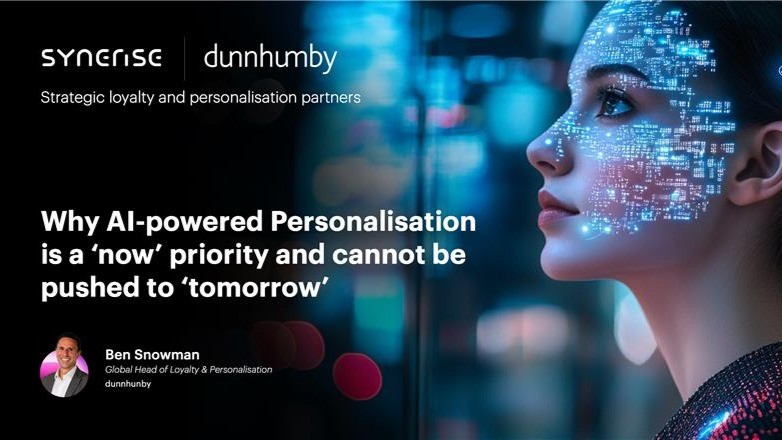
The integration of Artificial Intelligence (AI) into customer engagement has transitioned from a competitive differentiator to an existential necessity[I]. Enterprise leaders must recognise that the failure to establish high-fidelity, AI-driven personalisation capabilities immediately constitutes a significant risk to future market viability and profitability. The current landscape is defined by an accelerating divergence between organisations that harness AI for predictive customer relevance and those that remain tethered to legacy segmentation and engagement methods. Failure to move into the AI-powered future creates a series of risks which compound with time to create deficits, making it exponentially harder and costlier to reclaim relevance with customers and differentiate with competitors.
The business case for advanced personalisation is no longer anecdotal; it is empirically supported by compelling financial data that dictates a new minimum standard for commercial operation.
The core principle is the ability to leverage massive data sets—processing potentially millions of customer interactions daily—to achieve hyper-relevance at an unprecedented scale. Data from leading consulting firms indicates that fast growing organisations derive up to 40% of their revenue from personalisation compared with their slower growing counterparts[II].
This is a mandate for efficiency and productivity. By utilising predictive models to deliver micro-targeted offers and content, investments can be put to use by organisations to realise a 10-15% increase in total revenue with reported uplifts of up to 25% amongst high-performing retailers while reducing customer acquisition costs by up to 50%[III]. This shift from mass marketing to automated, predictive outreach yields personalised offers that achieve an ROI up to three times higher than generalised campaigns[IV].
For retailers, the adoption of AI-powered personalisation also unlocks adjacent opportunities to increase corporate profitability by up to 40%[V]. The economic conclusion is clear: personalisation at scale is the non-negotiable cost of operating in a competitive market.
As leading brands deliver ever more seamless and relevant experiences, customer expectations continue to rise. What once qualified as a “good” personalisation strategy quickly becomes outdated—an approach introduced just two to three years too late is now seen by customers as inadequate.
The cost of falling short is clear. Research shows that 76% of consumers feel frustrated when experiences aren’t tailored to their needs, and that frustration often pushes them to switch to competitors[VI]. Customers no longer tolerate mediocre interactions, especially when rival organisations are already leveraging predictive, real-time personalisation. Each new benchmark set by innovators raises the bar, leaving slower-moving businesses to appear increasingly substandard.
Delaying investment in AI-powered personalisation today creates a compounding deficit in customer experience. Left unaddressed, this deficit turns poor and frustrating interactions into the norm—an unsustainable trajectory that can ultimately prove fatal for a business.
The urgency of adoption is rooted in a critical structural reality: the longer an enterprise defers investment, the greater the Data Deficit it incurs, creating an escalating barrier to competitive parity.
AI models benefit from a feedback loop of compounding returns. Each personalised interaction generates proprietary, high-value data that immediately refines the model, leading to more accurate predictions and higher conversion rates in the next cycle. Organisations that delay adoption are not merely behind—they are systemically prevented from accruing the foundational data capital necessary to train competitive models in the future.
This time-sensitive constraint impacts two key areas:
The rapid deployment of AI-driven personalisation must be coupled with an evolving regulatory agenda. Included in this is the rigorous ethical governance to mitigate risks that threaten reputational capital. The use of highly granular data—which consumers willingly provide on the premise of a value exchange—requires absolute transparency, auditability and customer autonomy.
Regulatory frameworks are tightening the noose around companies that fail to adopt responsible personalisation practices. These frameworks are evolving at a rapid pace and will continue to do so for the foreseeable future, adding more and more demands on companies and AI innovators alike.
For companies that choose not to adopt AI-driven personalisation, the immediate compliance burden may appear minimal. But the gap in meeting requirements will only widen—and it will do so rapidly. The longer businesses delay adopting these capabilities, the more regulatory obligations will accumulate, increasing both the scope and cost of compliance, and turning that gap into a far more expensive and complex challenge to bridge.
The strategic decision for enterprise leadership is unambiguous: AI-driven personalisation is a non-discretionary investment that determines market survival. The economic incentives are too vast, and the competitive penalties for delay are too severe.
Organisations must cease viewing this transformation as an optional digital project and recognise it as a fundamental operational restructuring. The time for pilot programmes and philosophical debate is over. The priority is the swift, strategic development of a data-first culture and the deployment of governed AI solutions. Failure to act now guarantees systemic obsolescence in the face of a market defined by real-time predictive relevance.
Author: Ben Snowman dunnhumby

[II] https://www.mckinsey.com/featured-insights/mckinsey-explainers/what-is-personalization
[IV] https://www.bcg.com/publications/2025/how-cmos-scaling-gen-ai-in-turbulent-times